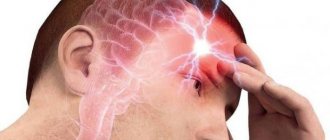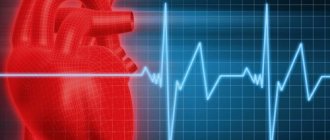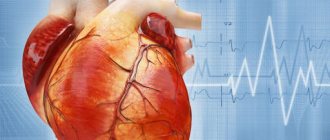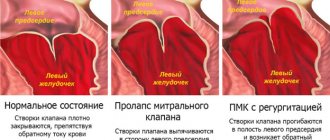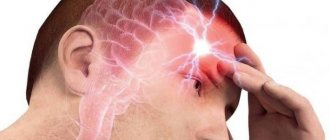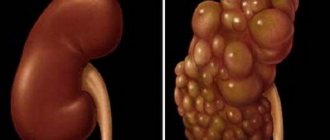Whether someone with VSD (diagnosis of vegetative-vascular dystonia) is accepted into the army depends on the clinical picture. Vegetative-vascular dystonia is not a separate disease; this term refers to a complex of symptoms that negatively affect overall well-being and the functioning of internal organs and systems. VSD has many manifestations of varying severity. In the Schedule of Diseases for Vegetovascular Dystonia, the conscript is not sent to the reserve, he is taken to serve with category “B”, “A”, but there are some nuances.
Vegetovascular dystonia general concepts
VSD is a polyetiological syndrome, which is characterized by dysfunction of the autonomic nervous system. The term VSD is outdated; in the International Classification of Diseases it is indicated as somatoform autonomic dysfunction of the nervous system - code F 45.3 [4]. Autonomic disorders are secondary, occurring against the background of mental, somatic diseases, with organic damage to the central nervous system, due to hormonal imbalance in adolescence, etc. In some cases, vegetative-vascular dystonia is an integral part of other, more complex diseases:
- hypertension, hypotension;
- cardiac ischemia;
- endocrine disorders, thyroid diseases.
VSD, as a secondary symptom, manifests itself in mental, nervous, and depressive disorders. The true cause of the pathology is unknown. Presumably – abnormal intrauterine development.
Factors influencing the occurrence of pathological processes:
- physical, emotional fatigue;
- frequent or prolonged stressful situations;
- chronic infection in the body - caries, tonsillitis;
- injuries;
- diseases of the endocrine and nervous system;
- intoxication;
- bad habits – alcohol, smoking;
- violation of sleep and rest patterns;
- unfavorable working conditions, excessive noise;
- poor nutrition.
Symptoms are of two types - general malaise, complaints about the functions of a particular organ. The psychological painful state is combined with physical discomfort. The main symptoms of VSD:
- increased sweating;
- trembling of limbs;
- headache;
- dizziness;
- weakness;
- chronic fatigue;
- lack of energy;
- increased heart rate, arrhythmia;
- dyspnea;
- redness, pallor of the skin;
- feeling hot or chills;
- slight increase in temperature;
- fatigue;
- bloating;
- nausea;
- fainting;
- belching;
- vomit;
- bowel dysfunction;
- apathy;
- weather sensitivity;
- hiccups;
- rapid breathing;
- impaired urination - difficult, frequent;
- joint pain.
Vegetative-vascular dystonia is often associated with low, high blood pressure, and heart pathologies. Depending on the characteristics of the symptoms and clinical picture, VSD is classified into mixed type, hypertensive, hypotonic, cardiac.
When is a conscript considered eligible?
In situations where the medical commission does not consider a conscript with VSD unsuitable for the army, he is assigned categories B2 or BZ, which indicate some restrictions in serving. These young men cannot be enlisted in the Air Force or border troops, but are quite suitable for military service in the navy, in the Ministry of Internal Affairs, chemical units, and in the management and maintenance of anti-aircraft missile systems.
It is noted that the army helps to overcome the manifestations of VSD in cases where disorders of the autonomic nervous system are exclusively functional in nature. A healthy, regular diet, physical activity, and a clear work and rest schedule help increase the body’s adaptive-resistant capabilities.
If after two to three months of service the symptoms continue to bother or intensify, the conscript is sent to the medical unit for hospitalization.
General advice to a conscript soldier diagnosed with VSD:
- notify doctors at the place of duty about the presence of pathology;
- in case of deterioration, submit a report to the commander (company, battalion, unit);
- Do not try to overcome panic attacks, insomnia, long periods of low mood, or headaches on your own.
Military personnel are subject to commission if:
- breathing disorders;
- persistent increase in blood pressure;
- bradycardia (low heart rate);
- migraines;
- fainting.
Do they take into the army with VSD?
There is no diagnosis of “vegetative-vascular dystonia” in the Schedule of Diseases. All conscripts are drafted into the army with category A, unless there are other health problems. There is a chance of receiving exemption and category “B”, “D” if vegetative-vascular dystonia is considered as a consequence of other more serious pathologies. If there is a violation of the functions of internal organs, the conscript may be granted release, but it is difficult to prove the seriousness of the situation.
Are they recruited into the army with a mixed type of VSD?
In this case, psychological and physiological disorders are combined. That is, a person complains of poor physical and emotional well-being. Symptoms disappear when unfavorable factors are eliminated and medications are taken that improve the functioning of the autonomic nervous system and brain. At best, you can count on a delay until the condition returns to normal.
Are they recruited into the army with VSD of the hypertensive type?
In the clinical picture of symptoms, problems with blood pressure come first. Poor health and dysfunction of internal organs occur as a result of increased blood pressure. There is dizziness, headache, heat in the face, body, intense sweating, weakness, etc. The condition normalizes when the indicators decrease. If vegetative-vascular dystonia is not associated with more serious diseases that are listed in the Schedule of Diseases, exemption from the army will not be given.
Are they recruited into the army with VSD of the hypotonic type?
The situation is similar to the previous diagnosis. Poor health is observed due to low blood pressure. There is weakness, headache, dizziness, fainting, drowsiness, decreased performance, etc. To treat the condition, tablets are used to increase blood pressure, vasodilators, sedatives, etc. With VSD of the hypotonic type, they are taken to serve unless the severity of the disease is proven, the frequency of relapses .
Do they take into the army with VSD of the cardiac type?
In this case, symptoms associated with the work of the heart appear more clearly - arrhythmia, shortness of breath, rapid heartbeat, pain on the left side, weakness, dizziness, etc. When diagnosing VSD, the work of the heart is examined, if no pathologies are detected, the conscript is taken to serve with category “B” ", minor restrictions on service.
VSD and the army
To understand whether people are recruited into the army with VSD, it is necessary to understand the meaning of the abbreviation itself, which stands for vegetative-vascular dystonia. These are disorders in the autonomic and vascular system of the body, which play almost the most important role for human life.
- Do they take into the army with nephroptosis (drooped kidney)
The autonomic nervous system is responsible for the functions of the heart, breathing, gastrointestinal tract, brain and other parts. A signal is sent along the nerve fibers to perform or cancel an action. The vascular system fills the entire body to provide nutrition, oxygen to every organ, cell, and dispose of waste. The pace and quality of work of the whole organism depends on the condition of the blood vessels.
With vegetative vascular dystonia, an imbalance of the “internal motor” - pinching of the spine interferes with the passage of nerve impulses and the speed of lymph movement. Damaged vessels create a shortage of blood in some area, for example, an increase or decrease in blood pressure.
Despite the fact that VSD is not considered a disease according to the medical classifier, symptoms are divided into the following types:
- Hypertensive vegetative vascular dystonia involves disturbances in blood pressure when the numbers on the tonometer show values above 140 to 90 mmHg. Art. High blood pressure is accompanied by headaches, sweating, sudden changes in temperature, changes in skin color, most often in the face and neck;
- Hypotonic VSD is a condition opposite to the first type - the pressure is low at 90 to 60 mmHg. Art. and below. Characterized by fainting, dizziness, disorientation in space with a sudden change in body position, loss of strength;
- Cardiac VSD is determined by symptoms similar to complaints of heart problems. Any heart rhythm disturbances (arrhythmia, tachycardia), mild or severe chest pain. In this state, fear of death often arises, which can turn into panic attacks of varying intensity;
- A mixed type of VSD is a condition of a young person when symptoms of the disease are observed in the hypertensive, hypotonic and cardiac type. It seems that the recruit has health problems throughout his body.
The problems, at first glance, are serious and should be a contraindication for conscription into the army. But whether they take into the army from the airborne forces and according to what type depends on the duration of the illness and the decision of the military commission.
Important! Of course, taking a guy into the army with poor health is a big responsibility, because the symptoms of VSD may indicate a serious illness, which, after arriving in the army, will manifest itself in a severe form under load.
How to understand whether they will take you into the army if a recruit has been diagnosed with VSD? - Go to the commission.
Fitness category for VSD
Vegetative-vascular dystonia is not a reason for exemption from the army. A conscript with this diagnosis is assigned fitness category “B” and sent to serve with some restrictions on the type of activity and troops. It is possible to obtain exemption, category “B”, “D” in the following cases:
- VSD of the hypertensive type is combined with hypertension. Blood pressure at the time of examination is above 140 mm Hg. Art.
- VSD of the hypotonic type is accompanied by frequent exacerbations - once a month, fainting. Facts of loss of consciousness should be recorded in the medical record.
- VSD of the cardiac type is combined with serious cardiac dysfunction - arrhythmia, tachycardia, failure, etc.
If a violation of the functions of internal organs and systems is proven, the conscript is given release. It is very difficult to achieve this; there must be a whole folder of diagnoses for related diseases.
How can I get a military ID for VSD?
Despite doctors’ mistrust of this diagnosis, with the right actions there are options to avoid the army.
Vegetovascular dystonia is divided into four types:
- hypertensive (increased blood pressure);
- hypotonic (lowering blood pressure);
- mixed (sudden pressure surges);
- cardiac (arrhythmia, tachycardia, oxygen starvation, cardiac disorders).
Read more about whether people with arrhythmia are accepted into the army.
Each type refers to certain symptoms characteristic of specific diseases. The young man needs to undergo a thorough examination. The identified pathology may become a reason to avoid conscription, or to receive a deferment intended for treatment.
For example, high blood pressure is just a symptom, but hypertension, characterized by constantly high blood pressure, is already a diagnosis.
Conscripts who really suffer from constant ailments should spend time on diagnosis in advance, collecting medical documents confirming the incompatibility of the diagnosis with the army.
Guys who have chosen VVA as a way to “scrape” are better off abandoning the idea. Most of the recruits who tried to use this argument were unable to convince the military registration and enlistment office employees when they went to study military science.
How to properly search for conditions for enlistment in the reserves
The Schedule of Diseases contains articles 24, 47, according to which you can receive fitness category “B”, “D” in the presence of vegetative-vascular dystonia. Article 24 talks about vascular diseases of the brain and spinal cord. Assigned category B, B4. Young men who experience exacerbations every month are accompanied by fainting and require long-term treatment can receive exemption. The difficulty lies in the fact that the fact of fainting must be recorded by doctors, that is, the person must lose consciousness in their presence. In a pre-fainting state, a patient does not always try to call doctors, and loss of consciousness is a matter of minutes.
Article 47 “Neurocisculatory asthenia”. This article discusses vascular diseases. Whether a conscript will be accepted into the army depends on the severity of vegetative-vascular disorders. This includes unstable low or high blood pressure that has not responded to treatment within 6 months. Cardialgia with severe arrhythmia, tachycardia, requiring hospital treatment.
In other cases, the conscript is assigned fitness category “B”.
conclusions
When passing the military medical commission (MMC), the conscript must present medical documents that contain severe symptoms of VSD recorded over the past six months. Under these conditions, after additional examination, the young man will most likely be declared unfit for combat duty. However, in most cases, the diagnosis of vegetative-vascular dystonia of the hypertensive type and the army are not mutually exclusive concepts. The decisive factors at the IHC when deciding on the issue of unsuitability are the opinions of a neurologist, psychiatrist, and therapist. In all other cases, VSD is not recognized as a diagnosis exempting from service.
How to document a diagnosis
Suspicion of any disease is based on the patient’s complaints, but to confirm the diagnosis, it is necessary to undergo a full examination.
The following symptoms must be present:
- cardialgia;
- respiratory manifestations - shortness of breath, nervous cough, etc.;
- tachycardia;
- asthenic syndrome;
- psycho-emotional disorders;
- fluctuations in blood pressure;
- cardiac arrhythmia.
Examination methods:
- ECG monitoring
- blood pressure measurement
- Ultrasound of the heart, large vessels
- stress tests to determine the adequacy of the cardiovascular system’s response to physical activity
- study of external respiration functions (spirometry);
- gastroscopy;
- radiography of the OGK;
- Ultrasound of the abdominal organs;
- laboratory tests of blood, urine, feces;
- study of the functional state of the brain (electroencephalography).
The diagnosis is established after a thorough, comprehensive examination, excluding other pathologies of the blood vessels, heart, stomach, intestines, etc.
In addition, in order to prove the severity of the disease, each time you feel unwell, you must seek help from specialists, make sure that symptoms, treatment, fainting, and other important points are recorded in the card.
Diagnostics
In the process of diagnosing neurocirculatory dystonia, especially of the mixed type, it is important for the doctor to exclude other causes of similar symptoms. The patient will undergo a thorough examination, including:
- collecting complaints and medical history, clarifying all details of the course of the disease;
- standard examination, including assessment of the functioning of the main body systems, including both sections of the ANS;
- general blood test to exclude inflammatory manifestations;
- general urinalysis to exclude renal pathologies;
- biochemical blood test, which necessarily includes a study of glucose and cholesterol levels, hormonal status, blood clotting and markers of autoimmune processes;
- ECG, ultrasound of the heart;
- daily monitoring of ECG and blood pressure;
- functional load tests (bicycle ergometry, treadmill) to assess the heart’s response to stress and determine the “safety margin”;
- chest x-ray, spirometry if necessary (if the patient complains of shortness of breath and a feeling of lack of air);
- rheoencephalography, Doppler ultrasound of the head and neck vessels: to assess the quality of blood supply to the brain and its structures;
- MRI of the head, x-ray of the sella turcica to visualize or exclude space-occupying formations;
- electroencephalography if one or another form of epilepsy is suspected.
During the examination, the patient also consults with a therapist, neurologist and cardiologist. If necessary, doctors of other specialties are involved: psychiatrist, endocrinologist, pulmonologist, gynecologist, nephrologist, etc.
Reviews
Dear readers, was this article helpful? What do you think about the diagnosis of vegetative-vascular dystonia and military service? Leave feedback in the comments! Your opinion is important to us!
Andrey
“With vegetative-vascular dystonia, getting category “B” is unrealistic. It’s faster to serve than to prove the severity of the disease.”
Oleg
“I have had VSD since I was a teenager. Frequent headaches and weakness. I went through all kinds of examinations, no pathologies were found. They write in conclusion - healthy. In the army I often felt unwell, but I served.”
Deterioration of well-being during VSD at work
Very often there are situations when, before conscription into the army, VSD had a mild form, and already in the service its manifestations became more noticeable. There are well-reasoned explanations for this: first of all, excessive physical activity, little time for rest, and mental stress. All of the above factors can provoke an exacerbation of this disease. In case of severe illness, the army doctor is obliged to send the soldier to the hospital. If the treatment turns out to be ineffective, the fighter may be discharged. A serviceman is sent home when, against the background of vegetative-vascular dystonia, pathologies such as migraine, severe arrhythmia, neuroses, hypotension, disturbances in the respiratory system and much more appear.

